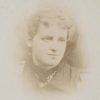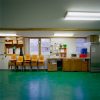Statement:
When working as a Lead Treatment Counselor, I provided residential therapy and oversaw the treatment of sixteen Level 5 Severely Emotionally Disturbed (SED) children. I primarily worked with boys ranging in age from five to eleven years old, but I would also occasionally work with girls and other boys outside of this age range living at other sites. About 75% of the children who lived in residential therapy were male. It is common for young boys to externalize their anger/pain by having violent outbursts, while girls often internalize their emotions making them more difficult to identify by parents, teachers, and other community professionals.
After being identified as emotionally disturbed by their parents or other professionals, the children were classified by their relative level of disturbance by a state organization. This level system ranges from 1 to 5, with 5 being the most severe level. Some of the children’s problems can be traced to severe neglect, ritualistic physical and sexual abuse, while other SED children come from nurturing families – “they were just born that way”.
Wanting to combine my loves for psychology, and photography, I would often try to incorporate photography into the day to day activities of the children I worked with. One day, I brought a pinhole camera to work to show the children. They were fascinated by the images that could be made with a simple camera made from any box, but quickly became bored with the time needed to develop the photographic paper and the time needed to re-expose and process the negative into a positive.
The pinhole camera that the children and I made for this project was used with a special holder that allowed a film made by the Polaroid Company to be used. This film, “Type-55”, required only a minute for development and provided both a negative and a positive image. Since there wasn’t a viewfinder to see what exactly you were taking a picture of, I chose to use this film in order to provide immediate feedback for their exposure and composition.
This project involved teaching the children the rudiments of pinhole camera operation, how to operate the Polaroid holder mentioned above, and how to operate my tripod. The tripod held the camera still during the long exposures required when using the pinhole camera — 5 seconds to an hour. After they learned the basics, I asked the children to photograph whatever the most important thing to them was. While they would set up their shot, we’d talk about why this object was so important to them. The captions are their responses to my questions.
(This project was made possible in part due to a grant by the Polaroid Foundation)























